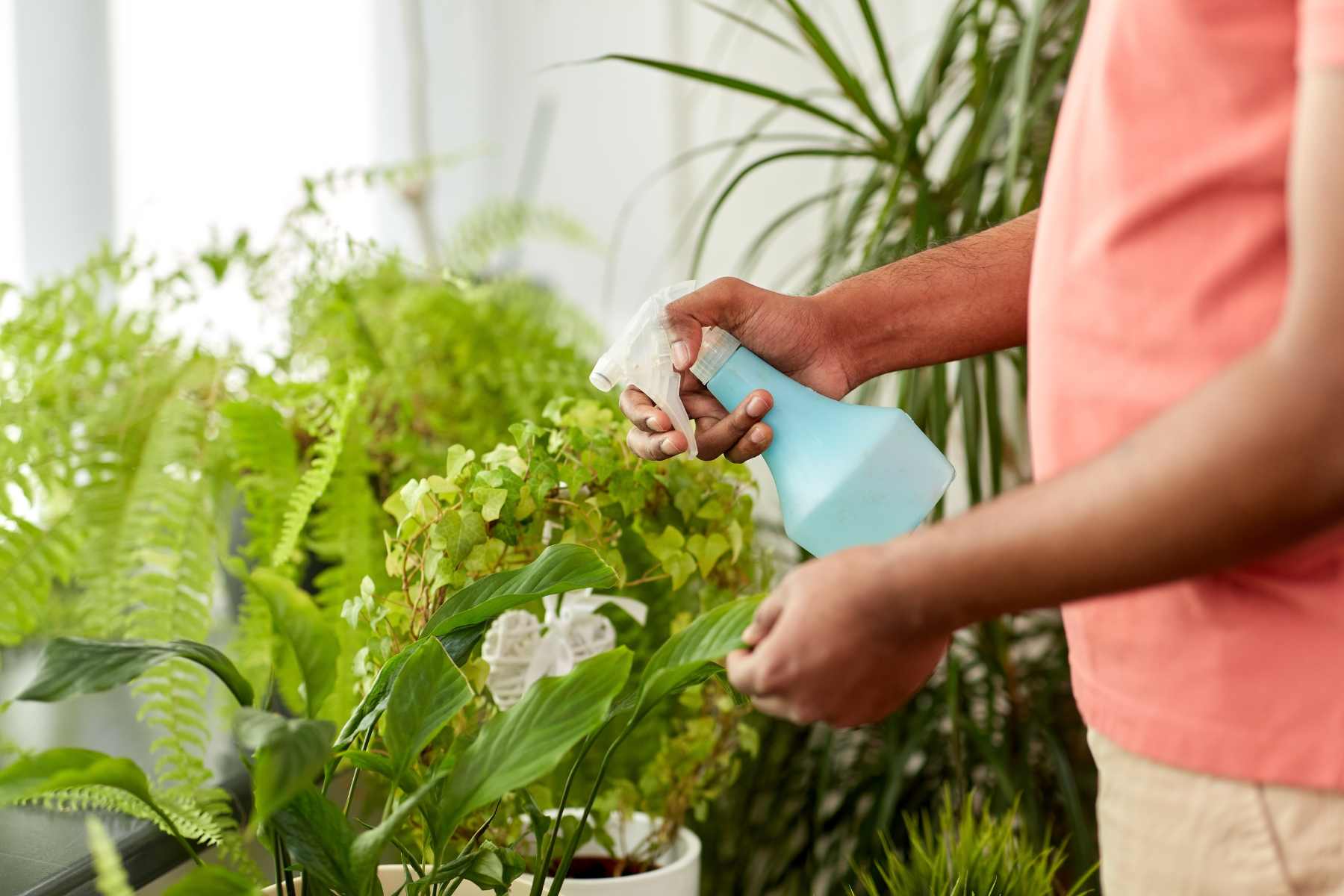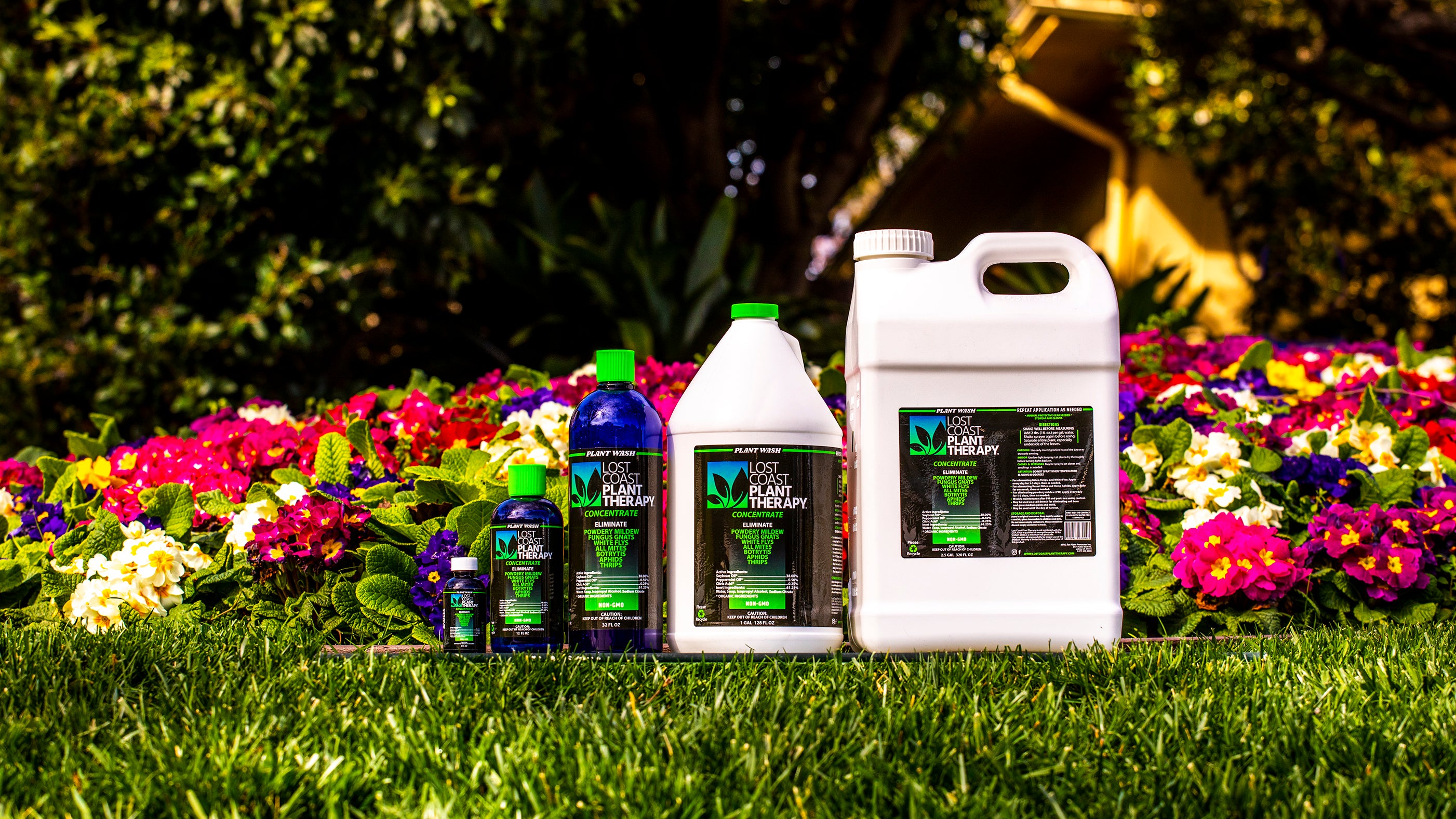If you've ever been frustrated by tiny flies buzzing around your houseplants, or noticed your beloved plants struggling despite your best efforts, it's likely you're dealing with fungus gnats. These tiny pests are more than just a nuisance—they can cause serious damage to your plants if not properly managed. Fortunately, you don’t have to face this challenge alone.
This guide is designed to help you understand, prevent, and control fungus gnats naturally and effectively. With practical tips, preventative measures, and the help of our Natural Plant Protector, you can ensure your houseplants thrive, free from the nuisance of fungus gnats.

What are Fungus Gnats?
Fungus gnats are little annoying flies that seem to appear out of nowhere, especially around your favorite houseplants. These delicate-looking insects have long legs and dark wings, making them easy to mistake for fruit flies or mosquitoes, but are primarily found in the soil. While the adult gnats are relatively harmless, their larvae is not. These tiny—they're only about 1/8 to 1/16 of an inch long—white, worm-like creatures with black heads live in the soil and feed on plant roots and organic matter, leading to significant damage, especially for young or sensitive plants.
Lifecycle and Behavior
It all starts when an adult female fungus gnat lays her eggs in the moist soil of your plant pots. Each female can lay up to 300 eggs during her short lifespan, which means a small problem can quickly turn into a major infestation if left unchecked. In just three to six days, these eggs hatch into larvae. These larvae will be feeding on fungi, decaying organic matter, and plant roots. This feeding activity can stunt plant growth and cause more severe health issues for your plants.
After about two weeks of feasting in the soil, the larvae pupate and transform into adult gnats. The entire lifecycle—from egg to adult—can be completed in as little as three to four weeks, making it easy for fungus gnat populations to explode under favorable conditions. To keep these pests under control, it’s essential to break their lifecycle by addressing both the adults flying around and the larvae in the soil.

Do Fungus Gnats Bite?
The answer is no, fungus gnats do not bite humans or pets. These tiny flies are often mistaken for mosquitoes due to their similar appearance, but unlike mosquitoes, fungus gnats are not interested in feeding on blood.
Adult fungus gnats have mouthparts designed for feeding on decaying organic matter and fungi, not for biting or piercing skin. So you don’t need to worry about bites or stings as their primary concern is finding moist soil to lay their eggs and a food source for their larvae.

Different Species of Fungus Gnats
Fungus gnats belong to several families, including Sciaridae and Mycetophilidae. While there are many species within these families, the most common species affecting houseplants and gardens belong to the Sciaridae family.
Common Species and Their Differences
Bradysia spp. (Sciaridae): These are the most common fungus gnats found in indoor plants. They are small, black, and have relatively long antennae. The larvae of Bradysia species are particularly damaging to plant roots. They thrive in damp, organic-rich soils and are a very common problem in greenhouses and nurseries. These larvae can cause significant root damage, leading to stunted growth and yellowing leaves in affected plants.
Orfelia spp. (Mycetophilidae): These gnats are less common in houseplants but can be found in outdoor gardens. They are similar in appearance to Sciaridae but have different larval habits and slightly different lifecycles. While less common in indoor settings, Orfelia species can be found in outdoor gardens where there is an abundance of decaying organic matter. Their larvae also feed on fungi but are less likely to damage plant roots compared to Bradysia larvae.

Favorite Plants and Habitats
If you’re like most plant enthusiasts, you probably have a few favorite plants that you love to nurture and watch thrive. Unfortunately, fungus gnats have their favorites too. Understanding which plants are most susceptible to these pests and what conditions they thrive in can help you protect your green friends.
African Violets: These beautiful flowering plants are often grown in rich, moist soil, making them a prime target for fungus gnats. The larvae can damage the delicate roots, stunting the plant's growth and leading to yellowing leaves.
Peace Lilies: Known for their striking white blooms and lush green leaves, peace lilies thrive in humid environments with consistently moist soil. This creates the perfect breeding ground for fungus gnats.
Ferns: With their love for humid conditions and damp soil, ferns are another favorite of fungus gnats. Whether you have Boston ferns, maidenhair ferns, or another variety, it’s important to keep an eye out for these common garden pests.
Pothos and Philodendrons: These popular indoor plants are often overwatered, creating ideal conditions for fungus gnats. The larvae feed on the roots and organic matter in the soil, potentially leading to root rot and other issues.
Seedlings and Young Plants: Seedlings and young plants are particularly vulnerable to fungus gnats because their root systems are not yet fully developed. The larvae can cause significant damage to the roots, affecting the plant’s overall growth and health.
See tips for maintaining your healthy houseplants with our Natural Plant Wash.

Common Ways Fungus Gnats Enter Homes
When you bring home new plants from the nursery or garden center, they might already be harboring fungus gnat larvae or eggs in the soil. Make sure to inspect them thoroughly and apply our Natural Plant Protector as a preventative measure.
Additionally, be cautious with potting soil, especially if it has been stored improperly or kept in a humid, warm environment. The eggs or larvae may already be present in the soil, and using this soil for your indoor plants can allow gnats to emerge and become noticeable as they mature.
Garden tools, pots, and other gardening equipment can also inadvertently transport fungus gnat larvae. If these items have been used with infested plants or soil and then brought indoors without proper cleaning, they can introduce these pests to your houseplants.
Lastly, remember that fungus gnats are tiny and can easily slip through small gaps in windows or doors, particularly if there are plants placed near these entry points. If outdoor conditions become unfavorable (too cold or too wet) gnats may move indoors where conditions are more suitable. Keep a close eye on your plants, particularly outdoor plants that may be infested with gnats. Bringing them inside to protect them from cold weather can also inadvertently bring gnats into your home.

Ideal Conditions that Attract Fungus Gnats
Now that we understand how fungus gnats enter, it's important to explore what makes them stay. Overwatering your houseplants or using soil that retains too much moisture creates the perfect breeding ground for these pests. As mentioned earlier, fungus gnats lay their eggs in damp soil, providing the moisture their larvae need to thrive.
Decaying organic matter is another significant attractant. True to their name, fungus gnats gravitate towards fungi and decomposing plant material. Soil that is rich in organic matter, such as compost or decaying leaves, becomes a hotbed for gnat activity.
Additionally, poor drainage can worsen the situation. Plants in pots without adequate drainage or in soil that does not drain well are more susceptible to infestations. Standing water or consistently wet soil forms an ideal breeding ground for these pests.

Signs of Fungus Gnat Infestation
One of the first indicators of a fungus gnat problem is seeing adult gnats flying around your plants. These tiny, mosquito-like flies are often seen hovering near the soil surface, especially when you water your plants or disturb the soil.
You might also notice these gnats crawling on the leaves or the soil of your plants. They are attracted to light, so you might find them around windows or lamps. Placing yellow sticky traps near your plants can help you monitor their presence. If these traps start filling up with tiny black flies, it's a clear sign that you have a fungus gnat infestation.

Symptoms of Infestations in Plants
If fungus gnats are left unchecked, their larvae can cause significant damage to your plants. One of the most noticeable symptoms is stunted plant growth. Since the larvae feed on the plant roots, they can severely impair the plant’s ability to absorb water and nutrients, leading to slower growth.
Yellowing leaves are another common symptom. This occurs because the damaged roots are unable to supply adequate nutrients to the plant. Even if the soil is moist, affected plants can appear wilted. This paradox happens because the roots, damaged by the larvae, can no longer effectively take up water.
In severe cases, you might notice root rot. This condition is characterized by a foul smell coming from the soil and roots that have turned brown and mushy. Root rot can be devastating for your plants, often leading to their decline if not addressed promptly.
To confirm a fungus gnat infestation, gently dig into the top inch of soil. If you find small, white, worm-like larvae with black heads, you have a problem on your hands. These larvae are usually visible to the naked eye and are a sure sign that fungus gnats are present.
Over time, a severe infestation can lead to the overall decline of the plant. The combination of root damage, nutrient deficiencies, and stress can cause the plant to weaken and eventually die if the infestation is not addressed.

How to Get Rid of Fungus Gnats
Watering practices are crucial in preventing fungus gnat infestations. Overwatering is a common mistake that creates ideal conditions for gnats. Water your plants deeply but less frequently, allowing the top layer of soil to dry out between waterings. This discourages gnats from laying eggs and disrupts the lifecycle of any larvae present.
Another excellent way to deal with fungus gnats is to prevent them from showing up in the first place by applying our Natural Plant Wash as a preventative measure. If you have an infestation, regular applications help control fungus gnats by suffocating and dehydrating both larvae and adult gnats.

Applying Lost Coast Plant Therapy to Control Fungus Gnats
Before applying Lost Coast Plant Therapy, give the concentrate a good shake to ensure all the ingredients are thoroughly mixed. Proper mixing is crucial for the product’s effectiveness when applied. Dilute the concentrate with water according to the instructions on the label. Typically, this means using 1 ounce of concentrate per gallon of water. For severe infestations, you might increase the concentration to 2 ounces per gallon, but it’s always best to start with the recommended amount.
Using a sprayer, apply the mixture to the soil and plant surfaces. Ensure you thoroughly saturate the soil where the larvae reside, as well as the stems and leaves to target any adult gnats. For best results, apply the product in the early morning or late evening when temperatures are cooler and always use as directed. This helps prevent the product from evaporating too quickly and ensures it has time to work effectively.
Repeat the application as needed, especially for severe infestations. Daily applications for several days can help bring the gnat population under control. Once the infestation is managed, reduce the frequency to once a week for maintenance and prevention. Regularly monitor your plants for signs of improvement and adjust the application frequency if necessary.
See Instructions here.

Safe, Effective, and Eco-Conscious Natural Plant Protector
One of the main benefits of using our Natural Plant Protector is its safety when used as directed. Formulated with natural and organic ingredients, this product is safe to use around your home, family, and pets when used as directed. You don’t have to worry about harmful chemicals contaminating your living space or affecting the health of your loved ones. Lost Coast Plant Therapy is environmentally conscious. It biodegrades naturally when used as directed, reducing the risk of environmental pollution. This makes it a responsible choice for gardeners who are mindful of their ecological footprint.
Unlike some synthetic treatments, our Natural Plant Protector is effective at controlling fungus gnats when used as directed but does not harm beneficial insects like bees, ladybugs, and praying mantises. These insects play a crucial role in maintaining a healthy garden ecosystem, and using our product will not harm them. Lost Coast Plant Therapy works by suffocating and dehydrating the gnats and their larvae, providing a powerful and immediate solution to your pest problem. This means you can protect your plants without compromising the health of your garden.
See How it Works here.

Importance of Regular Monitoring and Maintenance
Regularly inspecting your plants is essential for early detection and prevention of pest problems. Look for signs of fungus gnat activity, such as adult gnats flying around or larvae in the soil. Detecting these signs early allows you to address the issue before it escalates into a severe infestation.
Maintaining a clean indoor plant environment is also essential. Remove any fallen leaves, dead plants, and other debris from your plant pots promptly. If you use compost for your houseplants, ensure it's well-managed and stored properly to avoid becoming a breeding ground for fungus gnats.
A regular maintenance routine is key and should include checking the soil moisture levels to avoid overwatering, adjusting your watering schedule as necessary, and ensuring your pots have proper drainage. These steps help create conditions that are less attractive to fungus gnats.
Incorporating our Natural Plant Wash into your care routine offers added protection. Its natural and organic ingredients are not only safe but effective in controlling fungus gnats, making it an excellent choice for maintaining the health and vitality of your indoor plants.

Conclusion
Dealing with fungus gnats can be challenging, but with the right strategies and tools, you can prevent and protect your houseplants from these persistent pests. It involves understanding the behavior and lifecycle of fungus gnats as well as taking the time to implement preventative measures and address early signs of infestation.
By choosing Lost Coast Plant Therapy, you’re opting for a product that, when used as directed, helps you manage infestations without resorting to synthetic chemicals. This supports your efforts to maintain a healthier indoor ecosystem, which contributes to a cleaner, more sustainable living environment for you and your family. Enjoy peace of mind knowing your plants thriving and your home is safe from unwanted chemicals.

FAQ's
What are the signs that I have fungus gnats in my houseplants?
If you're noticing small flies around your indoor plants, especially near the soil, you might be dealing with fungus gnats. Key signs include seeing gnats flying around the plants or resting on the soil surface, larvae in the top layer of the soil, or observing that your plants are not thriving despite proper care.
How do fungus gnats damage my plants?
Fungus gnat larvae feed on plant roots and organic matter within the soil. This can stunt the growth of your plants, lead to yellowing of leaves, and, in severe cases, cause the death of young plants as the damaged roots fail to absorb necessary nutrients effectively.
How can I prevent fungus gnats from infesting my houseplants?
Preventing fungus gnats involves keeping the soil dry, avoiding overwatering, and ensuring proper drainage of plant soil. Regularly cleaning dead leaves and debris from the top of the soil can also help prevent an infestation. For ongoing protection, consider applying our Natural Plant Protector as a preventative treatment.

Can fungus gnats spread from one plant to another?
Yes, fungus gnats can spread from one plant to another as the adults fly between them, laying eggs in different pots. This makes managing an infestation crucial as soon as you notice gnats in one plant to prevent a wider spread.
What should I do if I keep noticing new gnats despite treatment?
If new gnats continue to appear, it may be necessary to reevaluate your treatment strategy. Ensure you are allowing the soil to dry sufficiently and that your plants are not being overwatered. It might also be beneficial to replace the top layer of soil and treat all your plants with our Natural Plant Wash, not just the affected ones. Treating all your plants, rather than just those visibly affected, helps control any hidden larvae or eggs and reduces the risk of reinfestation.
See more FAQ's here.

Additional Resources
Fungus Gnats - UC IPM - University of California Agriculture and Natural Resources
Fungus Gnats - Colorado State University
The Best Houseplants for Your Health - Forbes
Caring for Houseplants - PennState Extension
How It Works - Lost Coast Plant Therapy
Diagnosing Houseplant Problems from Diseases - Iowa State University






